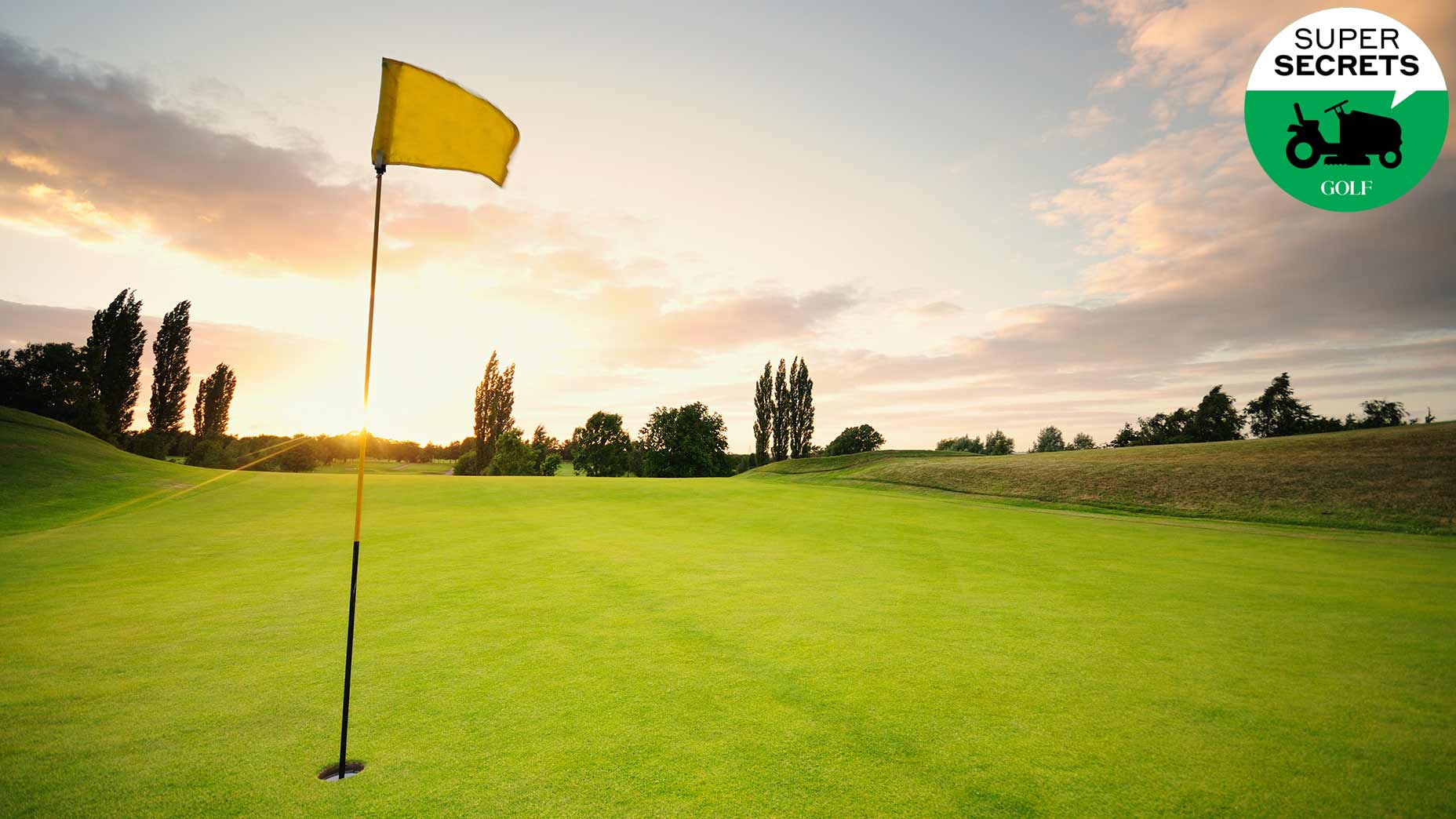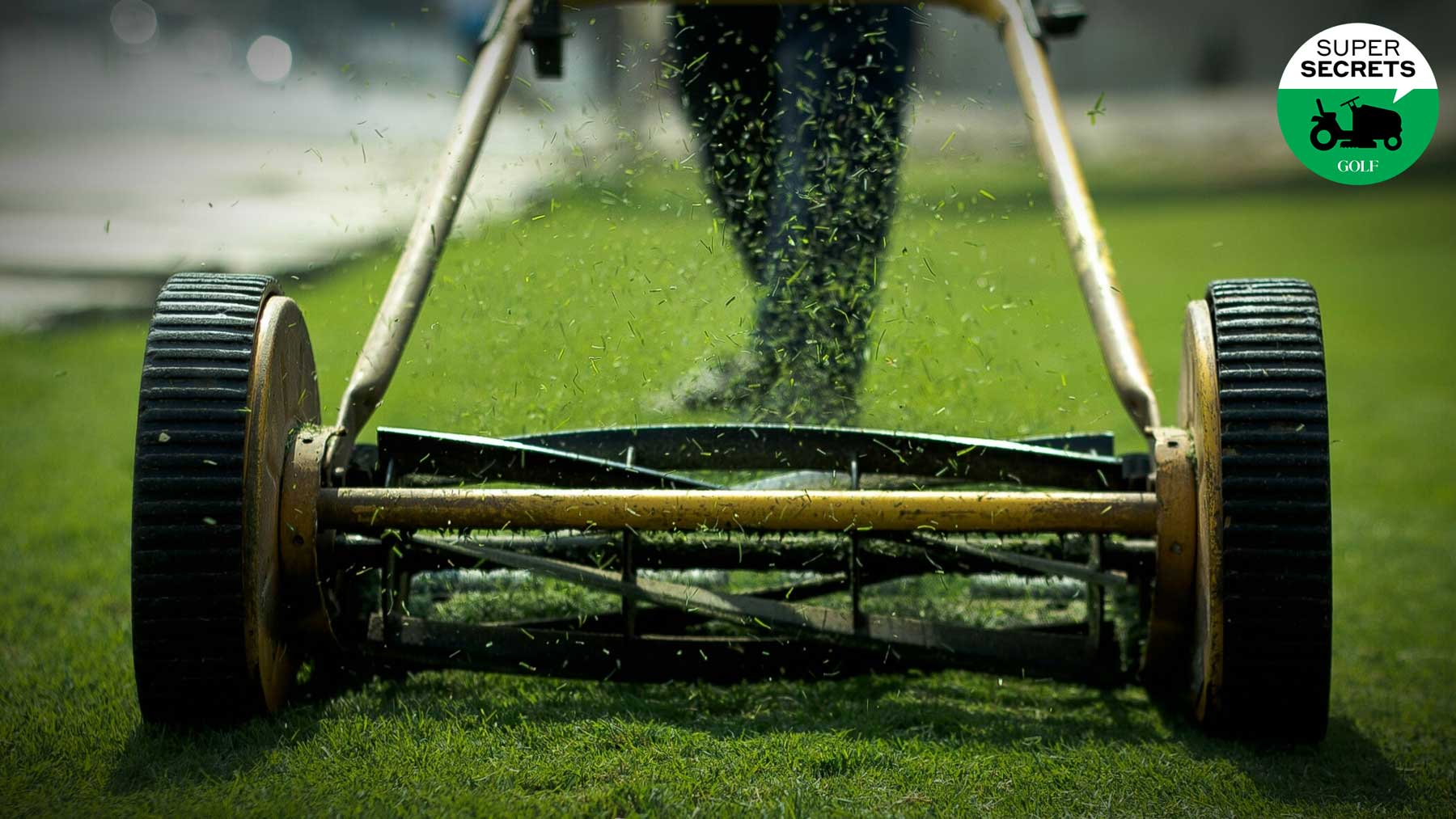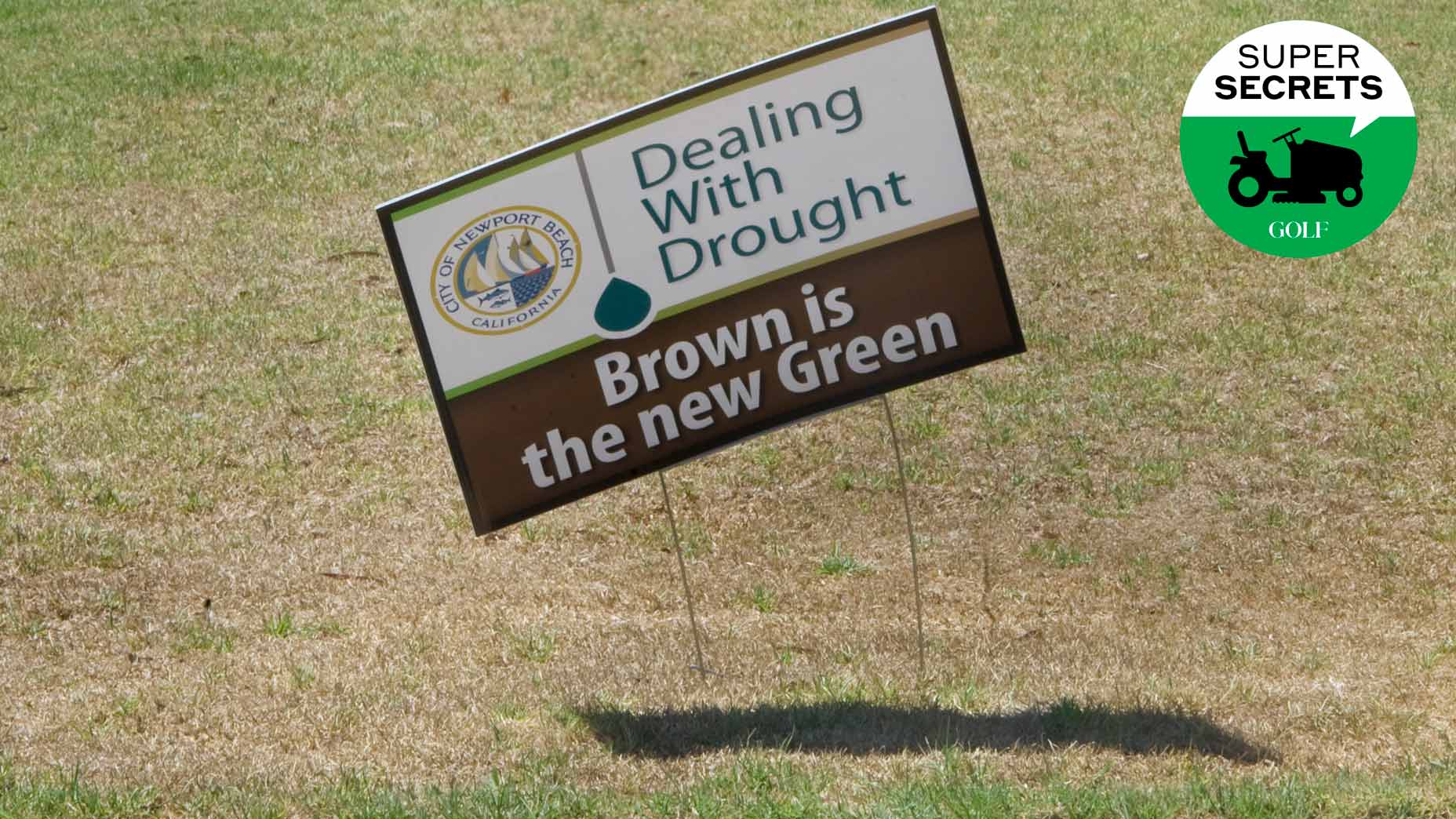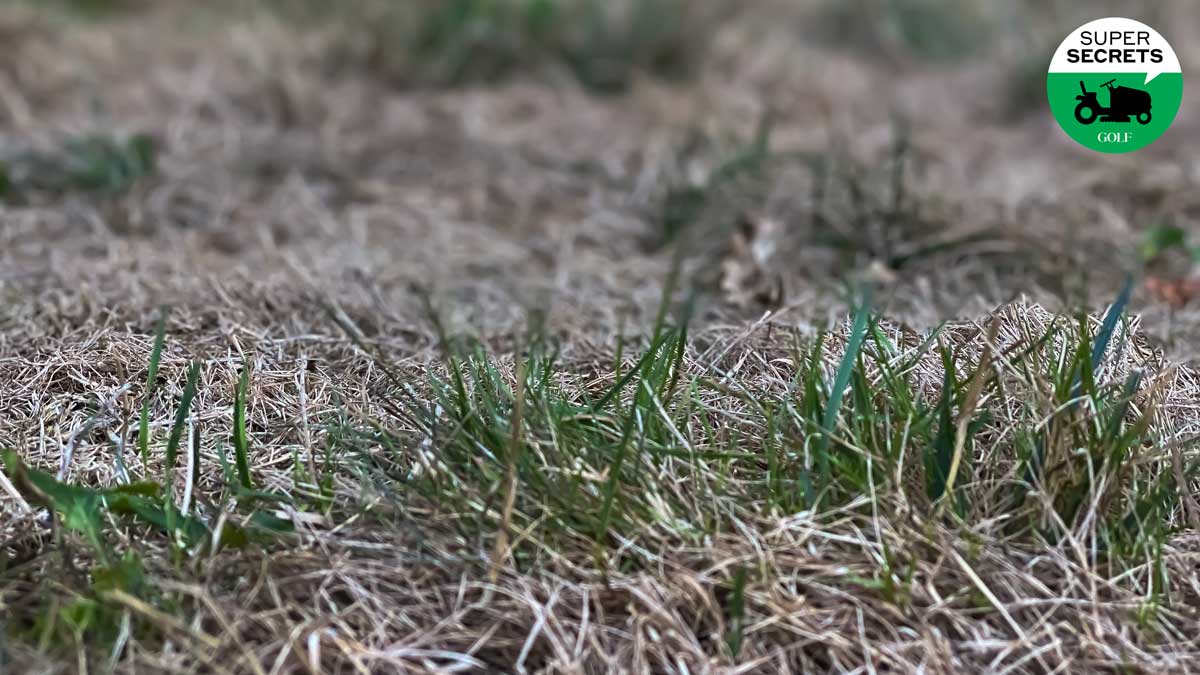Welcome to Super Secrets, a GOLF.com series in which we pick the brains of the game’s leading superintendents. By illuminating how course maintenance crews ply their trades, we’re hopeful we can not only give you a deeper appreciation for the important, innovative work they do but also provide you with maintenance tips that you can apply to your own little patch of paradise. Happy gardening!
Among the many takeaways from 2020 are these two golf-related lessons: golf-course superintendents really know their stuff, and golfers care a lot about their lawns. We learned as much this year through our Super Secrets series. Here are our five favorite tips from the year.
How low can you mow?
Grass is not like hair. You can’t cut it all off and expect it to grow back just as it was. When it comes to mowing, superintendents abide by the “one-third rule,” the gist of which is this: Never chop off more than one-third of the leaf blade with a single mow. Lopping off any more can lead to a range of short- and long-term problems, from browned-out patches to disease.
“The blade needs to have enough surface area so that it can carry out photosynthesis,” said Josh Smith, superintendent of Orinda Country Club, in Northern California. “Cut off too much and you’re basically stressing the grass.” Mowing roughly once a week is a good practice at home. If you let your lawn get shaggy, you may need to work in phases to get it down to your preferred height. Do a first pass with the mower, taking the grass down by no more than one-third. Then wait another day before you mow again.
Should you aerate your lawn?
On a golf course, aeration is a necessary evil. Superintendents take no special pleasure in punching greens, and we know how golfers feel about playing on them. But the practice is crucial for the short- and long-term health of putting surfaces. Question is: how important is it at home?
“If I had all the time and money in the world, I absolutely would (aerify),” said Jim Nedrow, director of agronomy at The Club at Indian Creek, in Elkhorn, Neb. The fact that he doesn’t, doesn’t mean you shouldn’t. It can only help your lawn — especially on lawns with heavily compacted soil from frequent use — provided you do it right.
The problem Nedrow sees with a lot of home aeration jobs is that the tines don’t go deep enough into the soil. People tend to use walk-behind machines with tines attached to drums that roll over the turf, poking holes that go no more than a half-inch deep. That might be good for breaking up thatch, Nedrow said, but the tines don’t penetrate down into the root zones, which means the grass doesn’t get the exchange of air and moisture that it really needs.
How much (and when!) to water your lawn, according to a golf-course superintendentBy: Josh Sens
“You really want to aerify with machines that use a vertical, up-and-down motion that gets down into the root zone,” Nedrow says. But that simply doesn’t happen with most home aeration jobs.
Timing also matters. As a general rule, it’s best to aerify when soil temperatures get above 55 degrees for four to five days in a row. You can use a meat thermometer to take your readings. “Once you reach that threshold, that’s when you know your grass is really ready to get going,” Nedrow says. Just be sure to get those tines down into the root zone.
Not that Nedrow follows his own advice at home. He says there’s a common quip in the industry that if you want to know where a superintendent lives, look for the worst lawn in the neighborhood around July or August, because by then, “the superintendent will be so tired of taking care of grass that he won’t bother with his own.”
When is the best time to plant grass?
The answer depends on a range of factors, none more important than the type of turf. Are we talking about warm- or cool-season grasses? True to their name, cool-season grasses, such as bentgrass, fescue and perennial rye, do best when they’re planted as autumn approaches and the mercury starts to drop, said Len Curtin, superintendent of George Wright Golf Course, just outside Boston. The sweet spot, he noted, is when soil temperatures are between 45 and 68 degrees, an optimal range that allows for both robust root development and healthy leaf growth.
As for warm-season grasses, this may come as a shock but they do best when planted in (drum roll, please!) warm conditions, with soil temperatures around 65 to 70 degrees, and daytime temperatures of above 80. These grasses also love sunshine, so the longer the days, the better, according to Craig Ellis, director of agronomy at Eldorado Country Club, in Indian Wells, Calif.
For those reasons, Ellis said, late April is prime time to plant a warm-season varietal like, say, Bermuda. The days are long and warm, but the temperatures have yet to reach the searing peak of summer, and there’s less competition from crabgrass and other weeds.
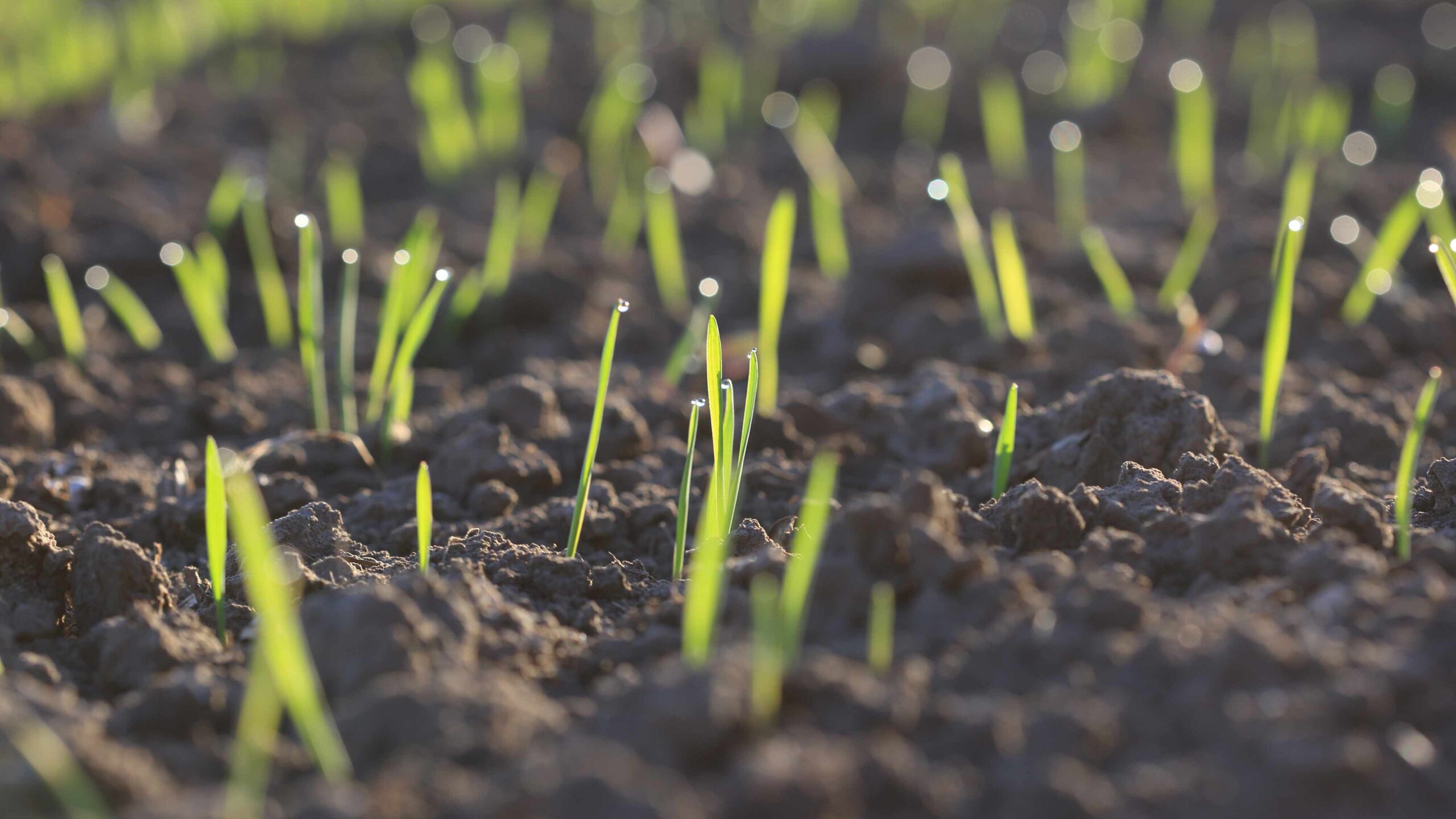
How much should you water?
This is another case in which the answer hinges on a host of variables. But as a general rule, it’s a good idea to give your lawn about one to two inches of water a week, according to Dan Cutler, superintendent of Rio Verde Country Club, in Rio Verda, Ariz. A rough way to measure this, Cutler said, is to put a bucket out when you water, and see how high the water gets.
Another way to tell if your grass has had enough is to stick a pointed object into the soil — a knife or a screwdriver will do. If it slides in easily, your grass is likely sated. If the soil is hard and dry and tough to penetrate, your turf is probably parched. Time to wet its whistle.
Fertilizing fundamentals
To feed or not to feed? That’s another question. The answer depends largely on homeowner preference, said Jimmy Kidd, former superintendent of Gleneagles, in Scotland, and founder of the Scottish Greenkeeper Association. If you want your lawn to look lush, “a little regular fertilization” is appropriate, and spring and fall are the usual times to do it. Keep in mind, though, the amount of fertilizer you need will likely lessen if you leave grass clippings on the lawn after mowing. So long as they’re not left in wet and matted clumps, those clippings are good for turf, as they decompose and transform into nutrients.





